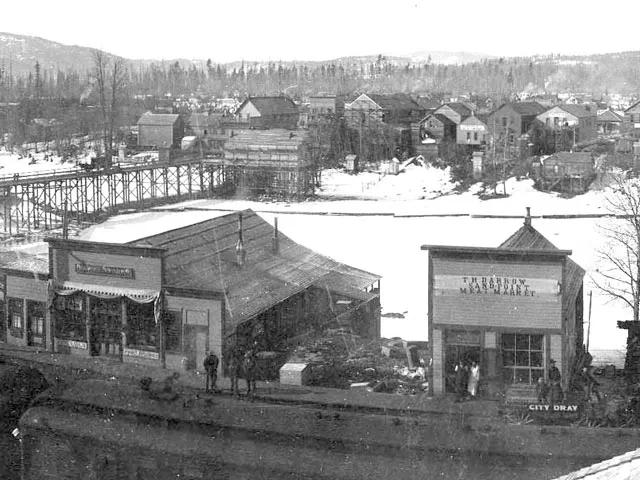
The Sandpoint Bypass project, in which U.S. Highway 95 skirts the eastern edge of the city instead of zigzagging through its center, has been in the middle of political, environmental and court challenges for decades.
But when it finally got the green light and began securing permits in the last several years, prep work revealed a mostly forgotten red-light district located on what used to be the original town site.
A huge archaeological dig in advance of highway construction has just wrapped up after collecting some 600,000 artifacts that paint a clearer picture of what city founders labeled a Restricted District that remained near Sand Creek and the railroad tracks after today’s city moved farther inland in the early 1900s.
So all those years when you parked your car for a day at the city beach or walked from the train depot to the Lakeside Motel, the remains of Willa Hermann’s Bordello or Marie Henderson’s Brothel or the Owl Saloon and Dance Hall were right underfoot.
Bob Weaver, a historical archaeologist hired for the dig, says many people don’t realize the district was there. All the vice businesses — dance halls, brothels and opium dens — had been literally marginalized and kept on the east side of the Northern Pacific tracks by early city burghers. Within a decade or so, many of these flimsy buildings were swallowed by industry or buried under fill dirt when the railroad raised its grade along the shore of Lake Pend Oreille.
“Most of the people of Sandpoint thought it was just the lakeside,” Weaver says. Painstaking research into land plats and data from the 1900 and 1910 censuses gave archaeologists a wealth of information, he says, including street addresses, types of business and the names of people who lived and worked there.
There were Japanese, Chinese and Canadian residents.
One of the prostitutes at madam Marie Henderson’s 10-woman brothel was the infamous Trixie Edwards, a 25-year-old from France who was reputed to be the prettiest woman in Sandpoint.
In fact, at an early presentation on the dig, Weaver says an elderly woman leaned over and said, “My uncle knew Trixie Edwards.”
But, Weaver adds in a later e-mail, “Try not to dwell on the ‘ladies of the night.’ One thing I constantly get from some people I talk to is why do they always have to focus on prostitution as if it was something romantic. Many girls ended up swallowing poison, and their lives weren’t all that romantic.”
Indeed, the same 1910 census lists Frances Miller of Montana among Henderson’s prostitutes. She was 16. Archaeologists have also turned up marbles, dolls and a toy train at the brothels, indicating children born to the prostitutes also lived there.
The muddy block of dance halls, bordellos and rooms to let were known to early Sandpointers as the Cribs.
Near the brothels, the dig also turned up a pile of about 100 Mumm’s champagne bottles, some still with their necks clad in foil.
The bottles are tiny. They were splits, holding roughly two glasses’ worth of champagne. Weaver suspects it was part of the protocol of visiting the brothel: A patron would buy a split of Mumms and share it with his woman of the evening before going to a room and, er, popping his own cork.
The range of objects is astonishing — spanning time from 8,000 years ago to the early 1900s, Weaver says. In prehistoric times two main trails — one going north to present-day Bonners Ferry and Canada, and the other, known as the Buffalo Trail, going east to the Great Plains — brought people and goods through the Sandpoint area. In the era of white settlement, it was railroads that did the same.
Items from a jadeite adze to European perfume bottles to opium pipes indicate a rich past. Artifacts will soon show up at the Bonner County Historical Society museum and in classrooms around the city to shine a light on earlier times.
